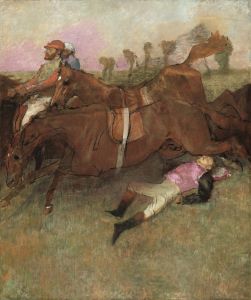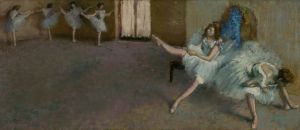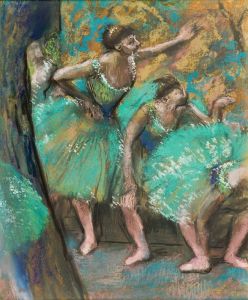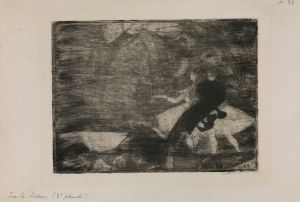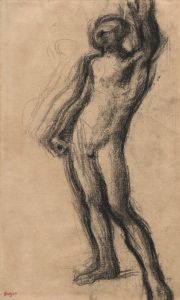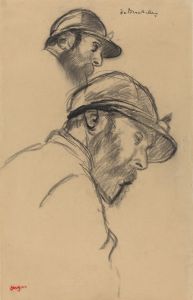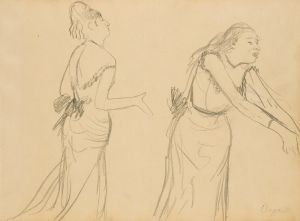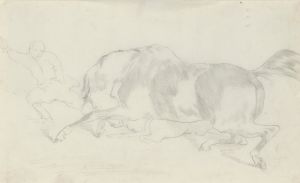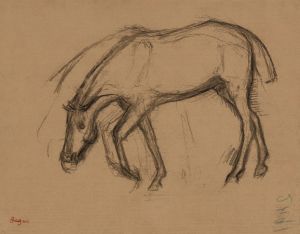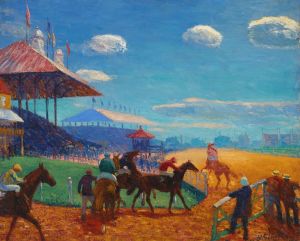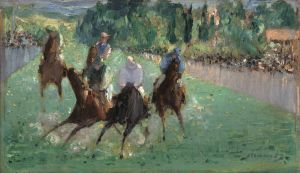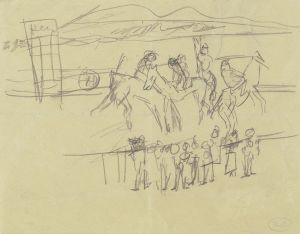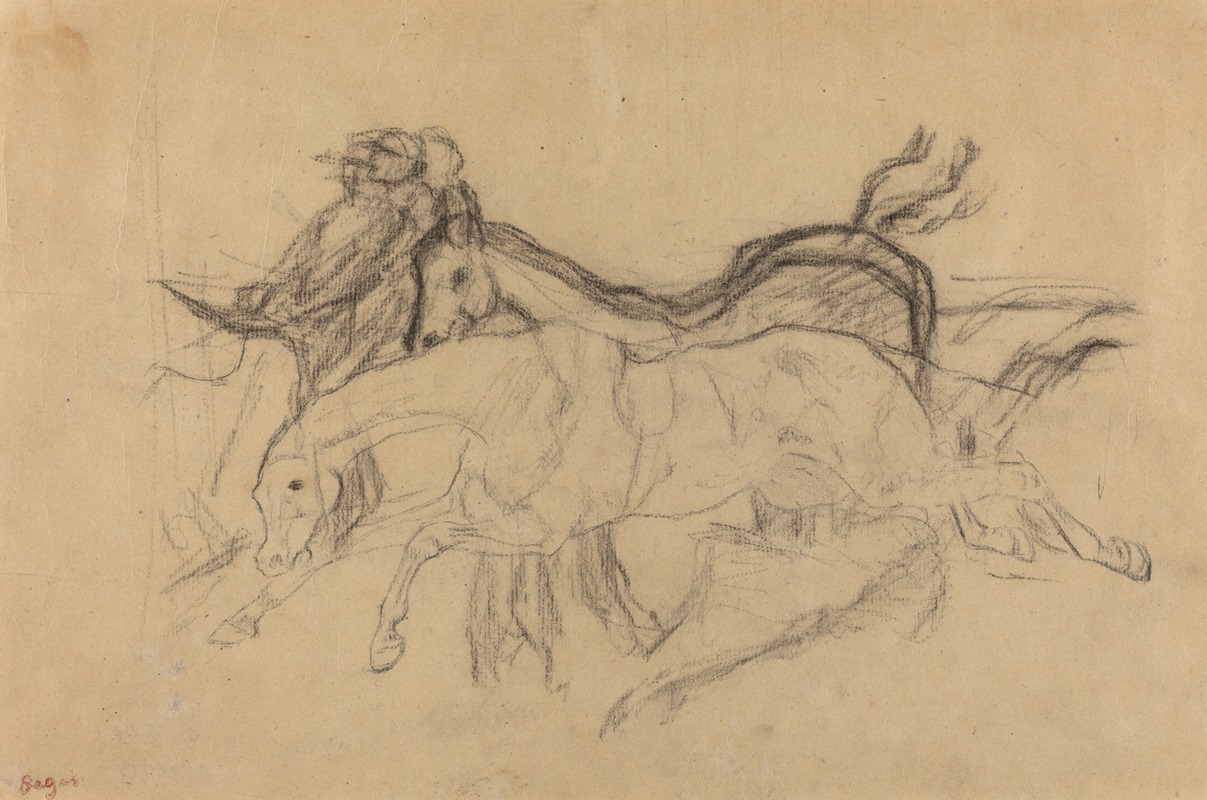
Racehorses
A hand-painted replica of Edgar Degas’s masterpiece Racehorses, meticulously crafted by professional artists to capture the true essence of the original. Each piece is created with museum-quality canvas and rare mineral pigments, carefully painted by experienced artists with delicate brushstrokes and rich, layered colors to perfectly recreate the texture of the original artwork. Unlike machine-printed reproductions, this hand-painted version brings the painting to life, infused with the artist’s emotions and skill in every stroke. Whether for personal collection or home decoration, it instantly elevates the artistic atmosphere of any space.
Edgar Degas, a prominent French artist associated with the Impressionist movement, is renowned for his depictions of dancers, women at work, and scenes of Parisian life. Among his diverse subjects, Degas also had a profound interest in horse racing, a popular pastime in 19th-century France. One of his notable works in this genre is "Racehorses," which captures the dynamic and vibrant world of equestrian sport.
"Racehorses" by Edgar Degas is a painting that exemplifies his fascination with movement and the elegance of horses. Although Degas is often associated with Impressionism, he preferred to be called a realist, and his work frequently reflects a meticulous attention to detail and composition. In "Racehorses," Degas employs these skills to convey the energy and anticipation of a horse race.
The painting typically features a group of horses and jockeys, poised and ready for the race. Degas's use of color and light in the painting is subtle yet effective, capturing the natural setting and the tense atmosphere of the racetrack. The horses are depicted with a keen sense of anatomy and movement, showcasing Degas's deep understanding of equine form and his ability to portray it with both accuracy and artistry.
Degas often visited racetracks, such as the Longchamp Racecourse in Paris, to observe and sketch horses in motion. These studies allowed him to create compositions that were both dynamic and true to life. His interest in photography and its ability to capture fleeting moments also influenced his approach to painting racehorses, as he sought to depict the instantaneous and transient nature of the sport.
In "Racehorses," Degas's composition is carefully arranged to guide the viewer's eye across the scene. The positioning of the horses and jockeys creates a sense of depth and movement, drawing attention to the central figures while also suggesting the broader context of the race. The painting reflects Degas's skill in balancing detail with impression, capturing the essence of the moment without sacrificing the integrity of the scene.
Degas's work on horse racing is part of a broader series of paintings and pastels that explore this theme. His interest in the subject was not merely artistic but also cultural, as horse racing was a significant social event in Parisian society. Through his art, Degas provides a glimpse into the world of 19th-century horse racing, highlighting its excitement and its role in contemporary life.
"Racehorses" is a testament to Degas's ability to blend observation with artistic expression. His portrayal of horses in motion remains a celebrated aspect of his oeuvre, demonstrating his versatility and his commitment to capturing the beauty and complexity of the world around him.






